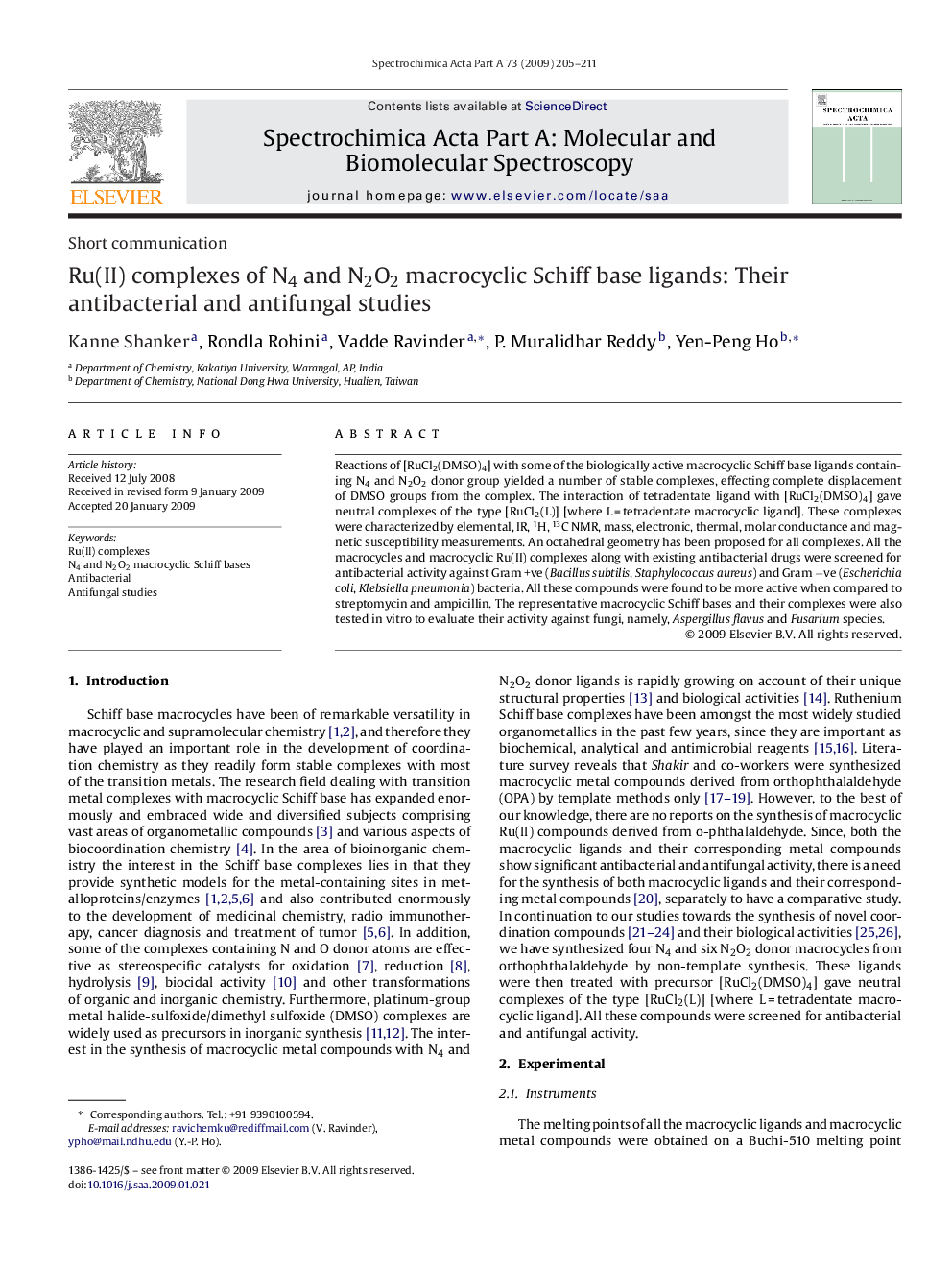| Article ID | Journal | Published Year | Pages | File Type |
|---|---|---|---|---|
| 1234550 | Spectrochimica Acta Part A: Molecular and Biomolecular Spectroscopy | 2009 | 7 Pages |
Reactions of [RuCl2(DMSO)4] with some of the biologically active macrocyclic Schiff base ligands containing N4 and N2O2 donor group yielded a number of stable complexes, effecting complete displacement of DMSO groups from the complex. The interaction of tetradentate ligand with [RuCl2(DMSO)4] gave neutral complexes of the type [RuCl2(L)] [where L = tetradentate macrocyclic ligand]. These complexes were characterized by elemental, IR, 1H, 13C NMR, mass, electronic, thermal, molar conductance and magnetic susceptibility measurements. An octahedral geometry has been proposed for all complexes. All the macrocycles and macrocyclic Ru(II) complexes along with existing antibacterial drugs were screened for antibacterial activity against Gram +ve (Bacillus subtilis, Staphylococcus aureus) and Gram −ve (Escherichia coli, Klebsiella pneumonia) bacteria. All these compounds were found to be more active when compared to streptomycin and ampicillin. The representative macrocyclic Schiff bases and their complexes were also tested in vitro to evaluate their activity against fungi, namely, Aspergillus flavus and Fusarium species.
